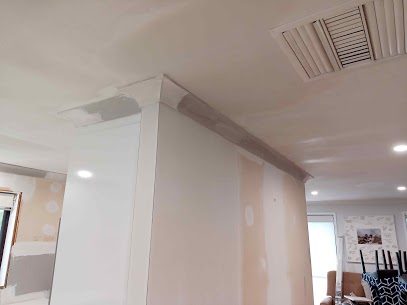Plaster repairs for ceilings: Avoiding these mistakes
Plaster damages on the ceiling can get worse pretty fast if not repaired timely and fitly. Plaster on the ceiling maintains the great looks and protects your property from risks of all sorts. Minor cracks are repairable by the owner himself. However, it is better to call a plaster repair professional for sagging, plaster breakages, and other complex damages. Therefore, whenever the plaster repairs for ceilings are in process, it is essential to avoid these major mistakes.
“Another mistake that most people make – when they try saving money – is putting back the softened plaster to its place and using adhesive to stick it.”
Major mistakes to avoid during plaster repairs for ceilings:
Fix the underlying issue first: Mistake One Plaster repairs for ceilings
If you need plaster repairs for ceilings, you have to avoid mistakes. Before we start fixing a damaged plaster and restoring it to its original condition, it is essential to find the underlying issue. If you have sagging plasterboards, it is a sign of the damage behind the plaster. Mostly it is due to water leakage, which softens the wood of the lath. The softened wood is unable to hold the plaster, thereby sagging it. If somehow you repair the plasterboard before finding out the base problem, you may end up further complicating the issue.
The problem of mould and bacteria is also familiar with sagging plaster. Remember that plaster itself is not something the mould is fed on; the water leakage is responsible and sets the breeding ground for mould. If the same is left untreated, the mould can grow into the studs, drywall, and any other material attached to it. The leaks can also waste the water.
The sagging can also be caused due to settling of the house. If the settling is the cause of the cracks and repairs, remember that it can also cause damage to the other parts of the house. A sagging plaster is a sign that it is time to check the house’s foundation for any problems. If you have spotted the root cause of sagging, it is always better to solve the problem before repairing the plaster.

Do not try placing the soft plaster back to position:
Another mistake that most people make – when they try saving money – is putting back the softened plaster to its place and using adhesive to stick it. The result is the problem only gets worse. In addition to not resolving the primary cause, they repair the sagged plaster only to see it falling apart again. Therefore, it is essential to remember and avoid pushing back the crumbling plaster back into its place. Replacing it with a new one is a viable option.
Remove the plaster carefully:
Another huge mistake is not being careful enough while removing the damaged plaster. If repair work is not done carefully, you may end up damaging the other sides of the wall. Use the utility knife to cut the damaged areas of the plaster. Do not vacuum the loose and crumbling plaster because this can pull out the whole portion of the plastering attached to the ceiling.
If you end up finding yourself in a similar situation, it is always better to call an expert to restore the sagging plaster.


Top 21 Tips Before You Hire A Plasterer
Top 21 Tips Before Hiring A Plasterer Before hiring a plasterer to install plasterboard or repair damaged plaster, there are important things to consider, here

How much does plastering cost? | 2021 Australian price guide
How much does plastering cost? | 2021 Australian price guide Summary: Plastering typically costs around $25-$50 per square metre (depending on size), so if you’re

Is It Ok To Plaster Over Wallpaper
Is It OK To Plaster Over Wallpaper? You could be thinking you’re saving time and money by plastering over your wallpaper, but the truth is

How to repair old plaster
How to repair old plaster? It is tempting to replace the plaster with drywall when renovating an old home. However, it can be the silliest

How much does it cost to repair plaster walls
How much should it cost to repair plaster walls? Cracks on the plaster walls, drywalls, and hollow doors are some of the most common repairs

What is the best way to Repair your Plaster Walls
What is the best way to Repair your Plaster Walls? Repairing plaster walls is not a difficult task. You need to know the exact method
